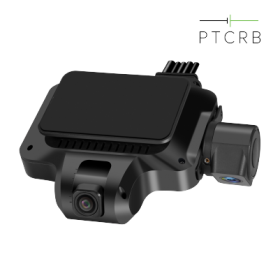Are you looking for ways to improve your fleet management and ensure the safety of your drivers on the road? Look no further than fleet dash cam with GPS tracking.
Fleet dash cams have been around for a while, but recent advances in technology have made them even more valuable for businesses with fleets of vehicles. With the addition of GPS tracking, these cameras can provide a wealth of information that can help you streamline your operations and keep your drivers safe.

Fleet dash cams with built-in GPS tracking technology have become an essential part of keeping your business vehicles and drivers safe on the road. These tiny cameras can provide valuable video evidence in the event of an accident, theft, or insurance claim. They also help track driver behavior and improve efficiency. If you’re thinking of investing in dash cams for your fleet, here are the basics you need to know to make an informed decision.
What does a fleet dash cam do?
A fleet dash cam is a dashboard-mounted camera that continuously records video as your vehicle is driven.
Here are just a few of the benefits of fleet dash cams with GPS tracking:
1.Increased Safety
Monitor and improve driver behavior. Footage shows how drivers accelerate, brake, and handle curves, offering insight into risky driving habits that can then be addressed.

One of the most significant advantages of using a fleet dash cam with GPS tracking is the increased safety it provides for your drivers. These cameras can capture footage of accidents or near-misses, giving you an insight into what happened and allowing you to take corrective action if necessary. GPS tracking also allows you to monitor your driver’s behavior on the road and identify areas where they may need additional training.
2.Improved Efficiency
Provide video evidence in the event of an accident or collision. Video footage can clearly show who was at fault and help resolve insurance claims quickly.
Fleet dash cams with GPS tracking can also help you improve the efficiency of your operations. By monitoring your drivers’ routes and behavior, you can identify areas where you can optimize your routes and reduce fuel consumption. You can also use the footage captured by the cameras to verify delivery times and ensure that your drivers are following your established procedures.
3.Reduced Liability
Prove liability in the event of a he-said-she-said dispute. The video proves what actually happened to resolve allegations against your drivers.
In the event of an accident, a fleet dash cam with GPS tracking can be invaluable in protecting your business from liability. The footage captured by the camera can provide incontrovertible evidence of what happened, reducing the risk of false claims and costly legal battles.
4.Enhanced Security
Deter and catch thieves. Having visible dash cams can discourage theft, and footage can be used to identify thieves if a vehicle is stolen.
Finally, fleet dash cams with GPS tracking can also help you enhance the security of your vehicles and cargo. The camera footage can help you identify potential theft or vandalism, and the GPS tracking can allow you to locate stolen vehicles quickly.
Why get GPS tracking?
GPS tracking allows dash cam recordings to be tagged with location, speed, direction of travel, and more. This provides several benefits for fleet managers:
- Automatic accident detection. Some high-end dash cams can detect sudden braking, swerving, or impact and automatically save the surrounding footage.
- Route tracking. GPS data shows the exact routes drivers took and the duration of trips, helping verify the mileage and time claims.
- Idling reports. GPS data reveals how long vehicles were left idling and helps identify inefficient practices.
- Geo-fencing alerts. Triggers can detect when vehicles leave approved areas to identify potential theft.
Other features to look for
In addition to GPS, consider dash cams with:
- Wide angle lens. The wider the view, the better the coverage of important details around the vehicle.
- Good image quality. Look for at least 1080p HD video for clear footage during the day and night.
- G-sensor. This detects the impact and automatically locks recordings to prevent overwriting important footage.
- WiFi or Bluetooth. Allows for easy video download and maintenance without removing the dash cam.
- Cloud storage. Footage uploaded to the cloud is safer from damage or theft of the physical dash cam.
- Parking mode. The camera continues to record when the vehicle is stopped and detects motion or impact.
How much does a fleet dash cam cost?
Prices start around $100 for a basic single-channel dash cam without GPS. High-end fleet dash cams with 2 or more channels, GPS tracking, cloud storage, and other features can cost $300-$800 per unit depending on specs. Installation typically adds a few hundred dollars or more.
Hopefully, this overview has provided useful information regarding fleet dash cams with GPS tracking technology. These tools offer several benefits that can improve the safety and efficiency of your business vehicles. Do your research to determine your specific needs and budget, then choose dash cams that offer the right mix of features.
 EN
EN ES
ES PT
PT TH
TH VN
VN JP
JP


